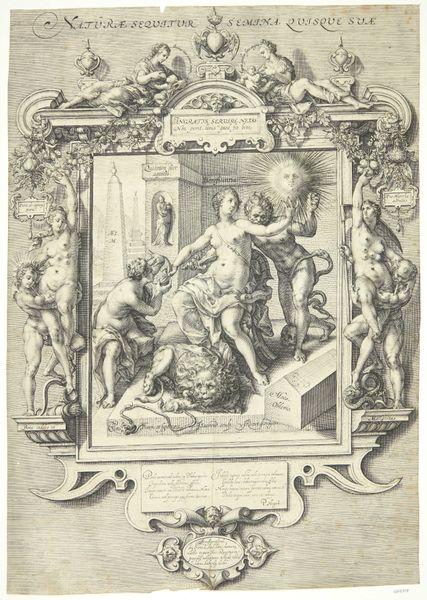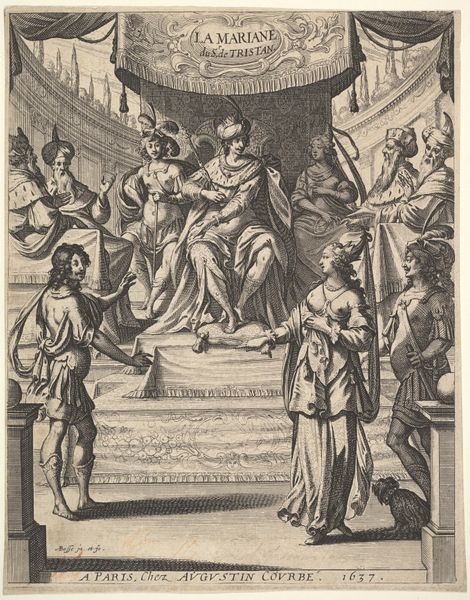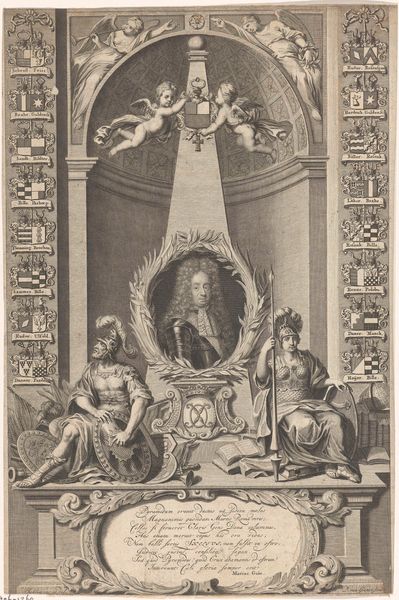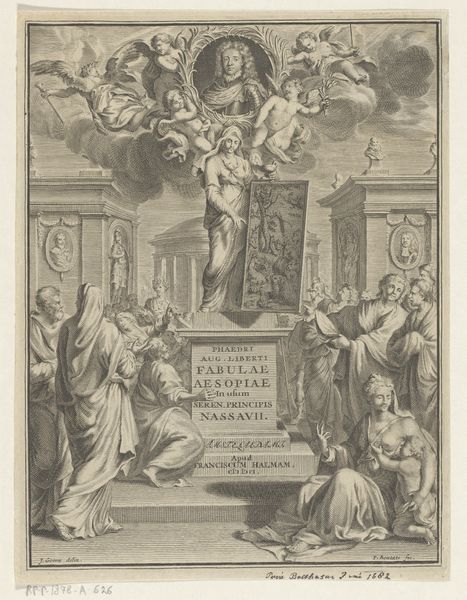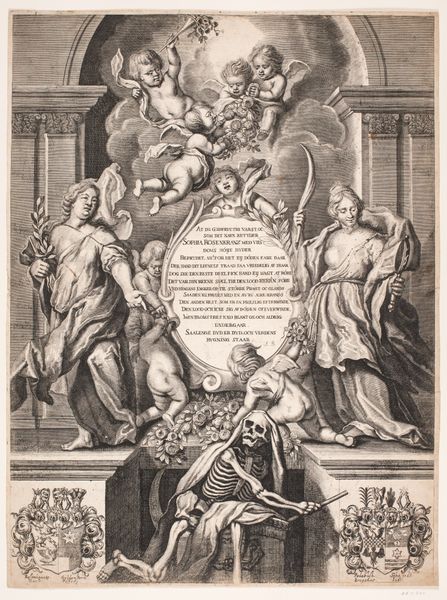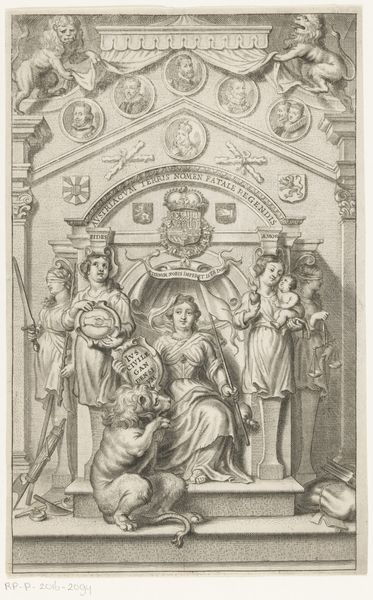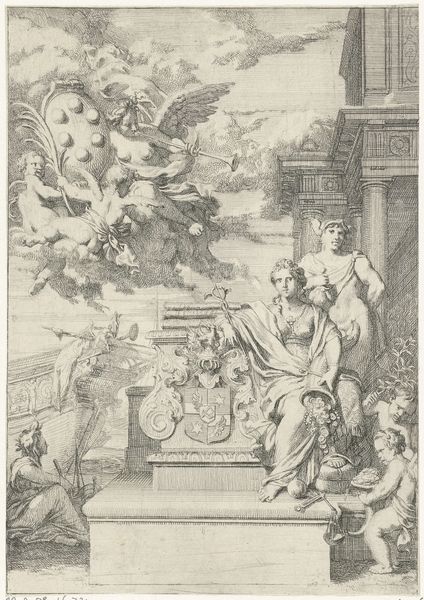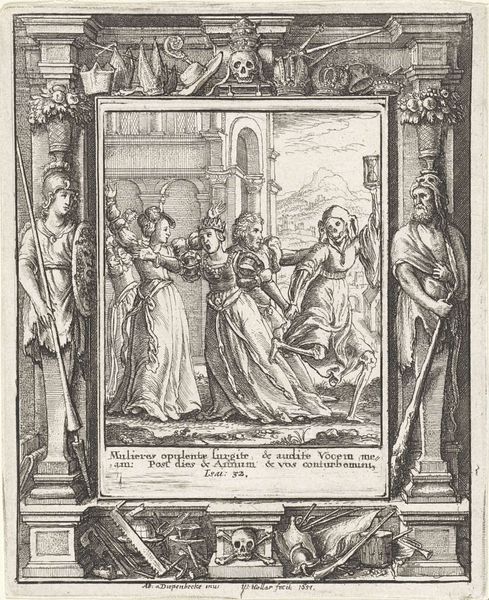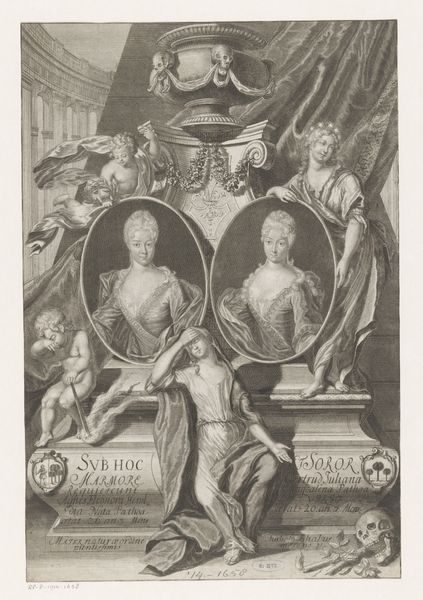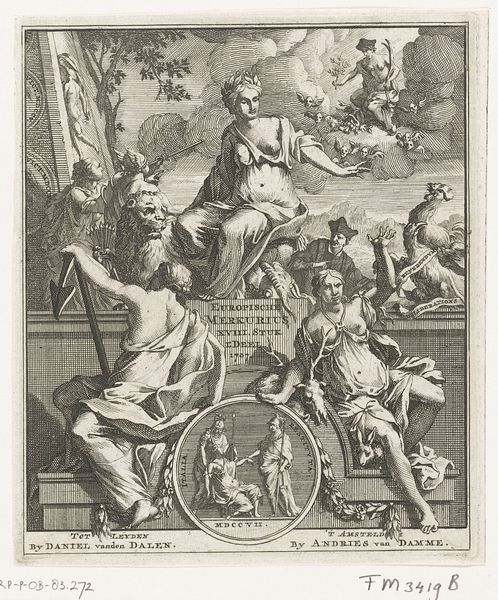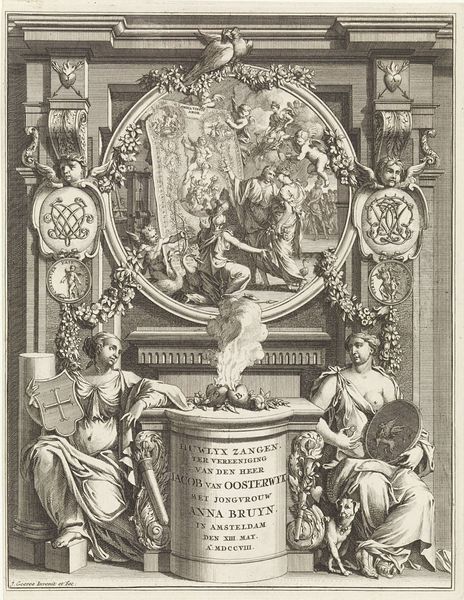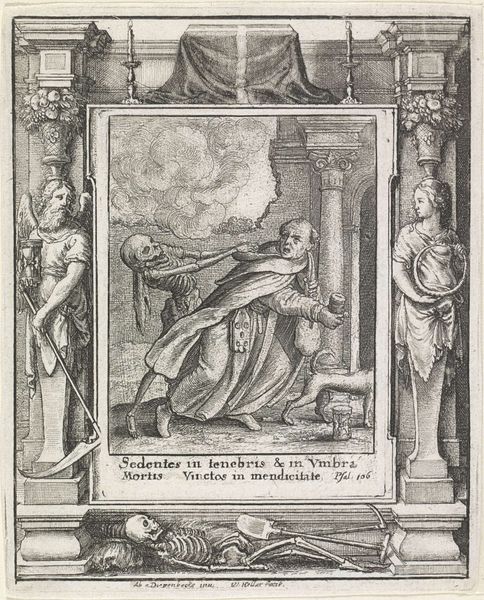
engraving
#
portrait
#
allegory
#
baroque
#
pen drawing
#
figuration
#
line
#
history-painting
#
engraving
Dimensions: height 347 mm, height 212 mm
Copyright: Rijks Museum: Open Domain
Editor: This is Crispijn van de Passe the Younger's "Allegory of Justice," made in 1627. It's an engraving, and I’m struck by how formal and symbolic it feels. What historical context is important for interpreting it? Curator: Well, first off, let’s consider what Justice *represents* at the time, and for whom. What power structures are at play when we visually codify ideas like Justice? Is it truly blind, as the allegorical figure suggests with her scales, or are there pre-existing biases influencing how it’s enacted? Who benefits from that and how are the subjugated further disenfranchised? Editor: That’s a great point! It does feel like a very... let's say, *male* gaze. Two figures stand flanking a monumental tablet – both men. Are we looking at something beyond 'justice'? Curator: Exactly. Are we seeing perhaps the embodiment of patriarchal legal systems solidifying their power? This engraving likely served a very specific, possibly propagandistic, purpose tied to reinforcing legal and societal hierarchies. And what about the racial undertones often inherent in representations of justice throughout history? Does this piece play into or subvert those expectations? Editor: So, the lion might not just represent courage, but also the brute force backing these systems? Curator: Precisely. Examining these symbols through a contemporary lens pushes us to confront the biases potentially embedded within these seemingly objective ideals, and that is key here. What if the figure of Justice was depicted differently? How would it challenge or reinforce existing power structures? Editor: That's a perspective I hadn’t fully considered. Looking at it now, I realize it's less a celebration of universal justice and more a snapshot of a very particular social order being enforced. Thank you! Curator: My pleasure. It’s crucial to view historical artworks as active participants in ongoing conversations about power, identity, and justice.
Comments
No comments
Be the first to comment and join the conversation on the ultimate creative platform.
